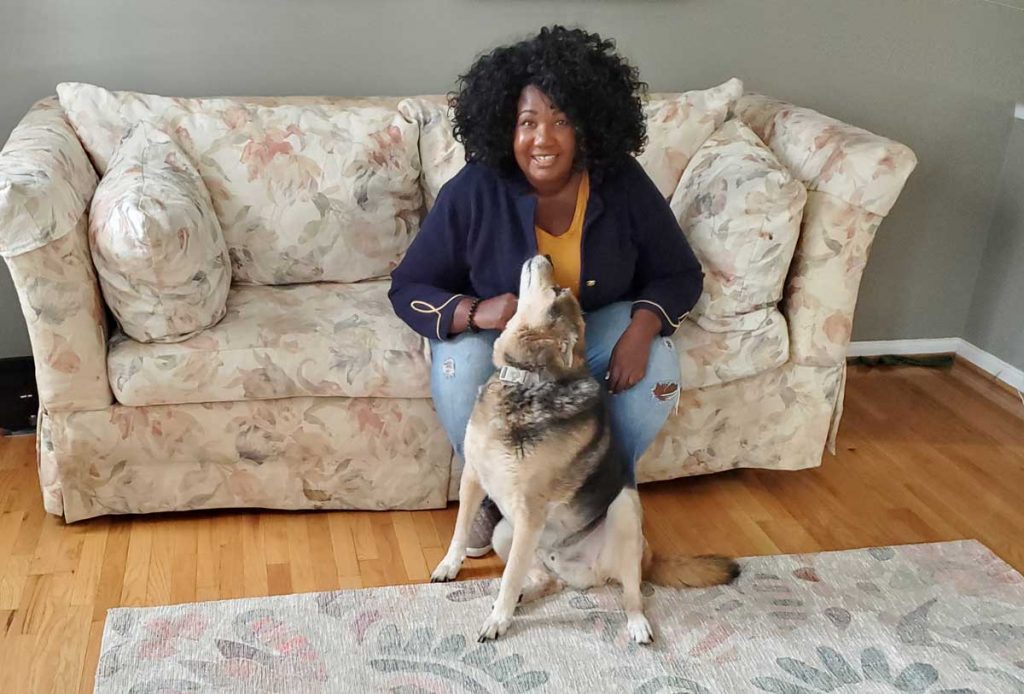
In the whirlwind half-year since Darlene Irby joined Jhpiego as director of digital health and health information, she’s visited country offices in Mozambique, Kenya and Zambia, and coordinated a much-anticipated track—Country Digital Health Strategies—which she’ll lead at the upcoming Global Digital Health Forum, which runs December 9–11 in Bethesda, Maryland.
Her Jhpiego team will be presenting eight abstracts spanning a range of digital health issues. For instance, one abstract explores improving quality of care by immersing health care workers into the perspective of clients by using 360-degree video delivered through a virtual reality headset. It’s a high-tech way of increasing both empathy and awareness of implicit bias. Another abstract looks at using GIS and spatial analysis to map pregnant women in relation to nearby health facilities, with the aim of reducing home deliveries and, ultimately, the deaths of mothers and babies.
DI: A compelling theme throughout the abstracts is the importance of appropriate use of technology and the pivotal role of data for improving health outcomes, access to care and measurable impact. It’s exciting that our teams are effectively using human-centered design and end user-focused approaches to build user-friendly and sustainable tools and platforms.
During your recent visits to the field, what disruptive technologies stood out?
DI: In Mozambique, computer scientist Jose Come showed me a fascinating project in progress that uses machine learning and artificial intelligence to predict which clients getting treatment for HIV are likely to be lost to follow-up. He’s exploring how he can apply this new element of data science within Jhpiego’s existing Web-based PISAUDE platform, which integrates health services data to support real-time decision-making.
Irby—a Memphis native with degrees in economics and 25 years of experience in health care—insists digital health in international development, a relatively new and small field, is not about travel and conferences any more than it is about glitzy gadgets and whiz-bang apps.
She is just as happy to hunker down behind the scenes with big, disparate data sets, seeking hidden patterns that reveal information and answers to support Jhpiego programs, ultimately accelerating our lifesaving work.
DI: I worry about people getting caught up in the glamorization of technology, which I call the bright-and-shiny-object syndrome. Technology is not the panacea for all the problems in global health. The work we do—I head up a team of four—can be tedious and redundant. And misunderstood.
How so?
DI: Technology can help us to more effectively and efficiently deliver care of a higher quality. It can also help us to recognize what impact looks like. At the same time, it can be expensive and exacerbate existing problems or distract us from a core issue, which is why we need to be responsible stewards of technology by assuming a problem-based, user-centered approach to its design and use. We often find that a certain technology, while great on paper, simply isn’t appropriate for a given context.
But increasingly, it seems, Jhpiego’s staff, partners and beneficiaries rely on technology in all ways, shapes and forms.
DI: With its large global footprint, Jhpiego is well positioned to test digital health interventions in settings with limited resources and complex political and infrastructural landscapes. The US Agency for International Development released its first global health strategy in October, with which we are aligned. Our priority now is turning data into information that helps us to improve decision-making as well as refine the questions we are asking.
Apparently, collecting data is just part of the story. Like having all the words you need to tell a story, but not knowing what the story is all about.
DI: Right. My job is to strategize about what Jhpiego’s next steps should be, what are the best practices, what is the framework.
So what is the next phase, beyond data collection?
DI: Our next foray is into data science; we need to venture further into predictive analytics. I’m excited to be developing a road map of what that would look like, programmatically and in terms of investing with other organizations, and winning or pursuing new work in this field.
We need to get all our data talking to one another, which means they need to be standardized and integrated. Over the years, we have collected all this information from all these different programs across the world. Analyzing it with a data science lens will allow us to see patterns we’ve never seen before and address problems before they even occur.
A big challenge is: How do we move toward doing data science or advanced predictive analytics at a global level as opposed to at a project level?
You see predictive analytics as a potential game changer for Jhpiego programs. How so?
DI: With data systems and structures required to build predictive algorithms, we could answer questions of impact, like how many Ebola cases could be prevented if we expanded our services to a new district. Or, for people with malaria or water-borne diseases, we could predict the likelihood of their contracting those diseases again and offer prevention-based interventions.
Several of our country teams are already using predictive analytics, mainly Mozambique—I already mentioned Jose’s project—and Kenya. Regional technical advisor Charles Waka and research manager Jonesmus Wambua are using predictive analytics in Kenya for family planning to target regions with low uptake of long-acting reversible contraceptives and prioritize interventions for specific regions based on sociodemographics.
Are you totally techy, all the time?
DI: My German Shepherd, Jack, forces me off of all the gadgets to take walks and play; his favorite game is hide-and-seek. He is my barometer, predicting when it’s time to disconnect.



